Understanding the CliftonStrengths™ Assessment: A Guide
 Our leadership is in crisis.
Our leadership is in crisis.
A survey commissioned by the World Economic Forum in 2015 found that 86% of people believed their leaders were ill equipped to solve the major global issues we face today (Shahid, 2015).
Respondents recognized that those in charge needed to be more inspirational and “must mediate, listen and include the opinions of others before making a decision” (Shahid, 2015).
Strengths-based coaching may hold some of the answers, cultivating leaders “whose capacity matches their challenges” (MacKie, 2014, p. 118).
This article explores the potential of the CliftonStrengths™ assessment to help leaders and non-leaders know their strengths and invest in others.
Before you continue, we thought you might like to download our three Strengths Exercises for free. These detailed, science-based exercises will help your clients realize their unique potential and create a life that feels energizing and authentic.
This Article Contains:
- What Is the CliftonStrengths™ Assessment?
- How Does the Assessment Work? A Guide
- 4 Domains of Strengths According to Gallup
- CliftonStrengths™: A Comprehensive List
- 5 Common Criticisms of the Assessments
- 4 Fascinating Books on Strengths
- A Look at Our Maximizing Strengths Masterclass
- Resources From PositivePsychology.com
- A Take-Home Message
- References
What Is the CliftonStrengths™ Assessment?
Most of us will find ourselves leading at several points in our lives – in the workplace, on a sports field, in school, or even at home.
But what makes a great leader?
That was the question a team of experts led by Don Clifton set about answering using decades of data from Gallup polls, 20,000 interviews with leaders, one million work teams, and consultations with 10,000 followers worldwide (Rath & Conchie, 2009).
They found that the most influential leaders do the following (Rath & Conchie, 2009):
- Invest in strengths
Focusing on and developing an individual’s strengths boosts engagement from 9% to an incredible 73% and leads to substantial gains for both employees and the organization. - Surround themselves with and invest in a great team
Leaders may not have all the skills needed, but their teams do. - Understand their followers’ needs
Followers often have specific requirements from their leaders.
Central to their findings was the idea that “while our society encourages us to be well-rounded, this approach inadvertently breeds mediocrity” (Rath & Conchie, 2009, p. 7).
They identified that leaders striving to be competent at everything were the least effective overall.
But what does this mean in practice?
Effective leadership means becoming aware of our own and our team’s strengths.
Successful leaders must build teams around them with a set of complementing strengths, rather than specific knowledge or competencies, and then build upon them (Rath & Conchie, 2009).
Clifton and colleagues’ research identified four distinct domains of leadership strengths that high-performing teams possess:
Executing
Influencing
Relationship building
Strategic thinking
Individually and combined, these strength categories are valuable for looking at how a leader can contribute to a team and a form a “practical lens for looking at the composition of a team” (Rath & Conchie, 2009, p. 23).
How can CliftonStrengths™ help?
Gallup’s top scientists identified that these four domains consist of 34 themes that can help a good leader think about individual contributions to a team and identify the sort of people who should surround them.
The strengths assessment they created, CliftonStrengths™ (formally the StrengthsFinder™) is a web-based tool that helps identify the strength makeup of leaders and how each team member can contribute to the overall group goals and successful outcomes (Rath & Conchie, 2009).
How Does the Assessment Work? A Guide

The assessment process involves the following three steps (modified from Gallup, n.d.a):
1. Take the CliftonStrengths™ assessment
The 30-minute assessment includes 177 paired statements designed to measure and score talents, thinking patterns, feelings, and behavior.
Examples of paired statements include:
I want everyone to like me versus I want everyone to adore me
I am a sensitive person versus I am a logical person
Starting conversations is an effort for me versus I get a rush from starting up a conversation with a stranger
You begin by rating each paired statement between the two extremes.
Completing the 177 questions unlocks a personalized report that identifies your top strengths and explains how to use them for success.
2. Get personalized CliftonStrengths™ results
Once all the paired statements have been scored, detailed and comprehensive reports offer personalized strengths insights, helping you use what you naturally do best to accomplish more.
Signature themes highlight what makes you stand out and offer a deeper understanding of who you are.
The CliftonStrengths™ 34 Report provides a complete profile of what makes you different and powerful, and includes how to:
- Understand your profile
- Make the most of your key strengths
- Manage potential weaknesses
The report suggests the following:
- Read the results and reflect.
- Learn what it means to apply your most vital strengths.
- Share your results and create a stronger team.
The CliftonStrengths™ for Managers Report helps you become a better manager while improving your team’s performance by incorporating your strengths into your (and their) daily routine.
Each theme page introduces:
- How the theme supports your success
- How that theme could prevent success
- Actions that you can implement right away
3. Use your CliftonStrengths™ results for success
Once you have your results, it’s about targeting your strengths at every opportunity. The resources and tools available from the Gallup Access platform will help you to:
- Develop a deeper understanding of your strengths
- Navigate the CliftonStrengths™ profile
- Work better with others by using what you do best
4 Domains of Strengths According to Gallup
The 34 themes identified by the online CliftonStrengths™ assessment tool sort into four domains of leadership strengths. Each offers a practical approach to exploring the strengths an individual brings to leadership and those required by the team who surrounds them (Rath & Conchie, 2009):
- Executing
Knowing how to make things happen – turning ideas into reality - Influencing
Selling ideas inside and outside the company and ensuring the team is heard - Relationship building
Being able to form a team that builds on the composite skills of its members - Strategic thinking
Helping the team make better decisions by focusing on where they could be
An exceptional leader is not good at everything. Instead, effective leaders identify and foster the right strengths for an optimal team (Rath & Conchie, 2009).
But how do you know when you have the right balance of strengths in the team?
Based on their research, Gallup identified that the following observations identify high-performing teams.
Strong teams (modified from Rath & Conchie, 2009):
- Focus on results
They may not always agree – indeed, there may be heated arguments at times – yet they do not become fragmented. Instead, they gain cohesion when things get tough.
Rather than fragment and hold on to bitter divisions, high-performing teams are objective, focusing on the truth and results.
- Prioritize and move forward
Despite challenges, obstacles, and resource issues, the best teams prioritize and pull together to deliver what is best for the organization.
Even following disagreement within the team, egos are put aside, and everyone works together toward the goal.
- Commit to their personal lives and work
High-performing teams are not all about work. Despite often working long hours, they find ways to balance their family and personal lives, bringing the same degree of energy to both. - Embrace diversity
Success is achieved when a team is diverse, not only in strengths, but also in race, gender, and age. Gallup’s research found that engaged teams focus on natural strengths rather than physical or superficial characteristics. - Attract talent
High-performing teams are recognizable by the way they draw talent. Despite long hours and hard work, everyone wants to join and be a part of the journey.
Top teams are an opportunity to learn, shine, and have the potential to make a real impact.
“Getting the right strengths on the team is a good starting point, but it is not enough.”
Rath & Conchie, 2009, p. 76
The manager must not see a high-performing team as a done deal, but instead should continue to grow the team, investing in their strengths and building better relationships.
CliftonStrengths™: A Comprehensive List

Executing
- Achiever: works hard, possesses a great deal of stamina, and has a constant need for attainment.
- Arranger: driven to organize yet remains flexible for maximum productivity.
- Belief: core values are unchanging and often form a clear purpose in life.
- Consistency: eager to treat everyone equally, establishing rules and stable routines.
- Deliberative: each decision is given serious attention and obstacles are anticipated.
- Discipline: routine, order, and structure are crucial to their enjoyment of the world.
- Focus: able to take instruction, follow through, and make necessary course changes and re-prioritization along the way.
- Responsibility: takes psychological ownership for what they have to do; honest and loyal.
- Restorative: talented at handling problems, figuring out what’s wrong, and finding the solution.
Influencing
- Activator: while often impatient, they make things happen by turning thoughts into action.
- Command: strong at taking control of situations and making necessary decisions; they typically have a sense of presence.
- Communication: adept at putting their thoughts into words and skilled at presenting and conversing.
- Competition: striving through hard work and competition to be the best and outperform others.
- Maximizer: a strong focus on strengths to stimulate personal and group excellence, finds ways to transform the strong into the superb.
- Self-assurance: confident in managing their lives, taking risks, and making the right decisions.
- Significance: wants to make a significant impact and be important in others’ eyes while remaining independent.
- Woo: enjoys the opportunity to meet new people and make connections with them, winning friends and fans.
Relationship building
- Adaptability: tends to take things as they come, stays in the ‘now’, and goes with the flow.
- Connectedness: every event has meaning, and they believe in the interconnectedness of things.
- Developer: able to identify and develop the potential in others while recognizing every slight improvement.
- Empathy: able to connect with others by picturing themselves in their lives or situation.
- Harmony: doesn’t enjoy conflict and seeks out agreement and consensus.
- Includer: aware of those who have been left out and seeks to include them.
- Individualization: a strong fascination in the qualities making each person unique and how they can work together productively.
- Positivity: upbeat, gets others excited about what they are planning.
- Relator: enjoys forming close relationships and working together to achieve goals.
Strategic thinking
- Analytical: able to understand causes and reasons behind what has happened, and can grasp all that may affect a situation.
- Context: keen to understand the present context based on the past through researching history.
- Futuristic: inspires themselves and those around them by how things could be.
- Ideation: fascinated by ideas and able to see connections.
- Input: curious and wishing to know more regarding relationships and ideas while accumulating information.
- Intellection: introspective, enjoys intellectual discussions and activities.
- Learner: has a desire to learn and continuously improve. The process of learning itself excites them.
- Strategic: finds alternative ways to move forward and can spot patterns and issues.
For further details on each of the 34 themes, check out the Gallup website.
9:10
Understanding the 34 themes of cliftonstrengths – CliftonStrengths
5 Common Criticisms of the Assessments
Chamorro-Premuzic (2016) highlights some of the challenges against the use of strengths-based assessments and coaching:
- “[H]igh performing leaders tend to get better by developing new strengths, not just enhancing old ones” (Chamorro-Premuzic, 2016).
- Your top strengths may be better than your other strengths but may not set you apart from the rest of the population.
- The strengths-based approach suggests an equal focus on developing the strengths of less effective employees rather than focusing resources on high-potential staff.
- Too much of a strength can be a bad thing, even becoming toxic.
- Focusing on the positives yet ignoring the importance and damage caused by people’s weaknesses is wishful thinking.
While there may be validity in some of these claims, the work of Clifton and his colleagues at Gallup is underpinned by a great number of interviews with leaders and followers.
Furthermore, ongoing work with companies confirms the benefits of using strengths-based assessments and developing the strengths of their staff (Rath & Conchie, 2009; Gallup, n.d.c).
4 Fascinating Books on Strengths
The following list contains some of our favorite books on strengths-based development.
1. Strengths-Based Leadership: Great Leaders, Teams, and Why People Follow – Tom Rath and Barry Conchie
This book introduces Gallup’s landmark study of leaders and followers and explains the details of the CliftonStrengths™ assessments.
Rath and Conchie reveal the importance of knowing your strengths and the four basic leadership needs.
Find the book on Amazon.
2. The Power of Character Strengths: Appreciate and Ignite Your Positive Personality – Ryan Niemiec and Robert McGrath
This valuable text introduces the 24 character strengths that form the VIA strength model.
It then explores how to activate your positive personality traits and boost your wellbeing to lead a happier life.
Find the book on Amazon.
3. Character Strengths Matter: How to Live a Full Life – Shannon Polly and Kathryn Britton
Shannon Polly and Kathryn Britton bring the 24 VIA strengths to life using stories from family and business settings.
Well known to actors and athletes, this positive psychology book is a fascinating and insightful journey into the power of using your signature strengths.
Find the book on Amazon.
4. It’s the Manager: Moving From Boss to Coach – Jim Clifton and Jim Harter
Using decades of Gallup research, this book explores leaders’ potential to embrace change and inspire their teams.
According to Jim Clifton and Jim Harter, the future of work is not the old-style command-and-control, but rather in developing the strengths of staff and making the organization a success.
Find the book on Amazon.
A Look at Our Maximizing Strengths Masterclass
Now that you and your team are familiar with your strengths, the logical next step would be to develop them further.
Our Maximizing Strengths Masterclass© is a powerful six-module coaching package that you can use with your employees, team, clients, or business leaders to help them realize their unique potential.
The training develops you as a strengths-based practitioner by enhancing your professional development with exercises, coaching videos, presentations, and structured activities through an online masterclass.
The masterclass is broken down into six modules that provide:
- An in-depth understanding of positive psychology and the foundations for a strengths-based practice.
- Deep insight into what makes up strengths; how they interact; and the interplay between strengths, weaknesses, and learned behavior.
- A range of powerful techniques to increase awareness of personal strengths.
- An explanation of how a person’s beliefs impact their strengths and the importance of a growth mindset.
- Guidance on assessing strengths and working with them to understand their short- and long-term impact.
- Clear teachings you can use to explain the pitfalls of over- or under-use of strengths and how to realize lasting change.
The training is based on the latest scientific insights into strengths, encouraging optimal functioning through identifying and developing values and talents.
Using practical techniques developed from positive psychology’s strengths-based theories, the following is possible:
- Employers can help staff use and develop their strengths to enjoy what they are naturally good at.
- Coaches can add strengths-focused training to their skill portfolio and professional coaching toolkit.
- Therapists can build practical and valuable workshops, training programs, and client treatment plans.
- Coaches can develop their practice as a center for strengths-based coaching skills.
- Therapists can become practitioners sought out for their skills in optimizing strengths.
The training offers a firm foundation for becoming a strengths-based practitioner, employer, or business leader; access to the latest theory; practical advice on strengths; and the tools needed to develop others.
Resources From PositivePsychology.com
We have many resources throughout our site that can help you or your client identify and use top character strengths.
Among these is our Strengths Exercises Pack, which includes three hand-picked exercises from the Positive Psychology Toolkit© that we’re giving away for free.
Here’s a little bit about each of the activities that are included:
- Red and Green Activities
This exercise explores the difference between activities that utilize our strengths and those that rely on our weaknesses when it comes to energy and engagement. As part of the activity, clients take one week to track and reflect on different activities’ effects on energy to help increase strength awareness and utilization. - You at Your Best
This exercise invites clients to tell a story, illustrating a time when they performed at their best or did something exceptionally positive. In this, clients will get to savor the positive experience and systematically explore the role their strengths played in producing this optimal outcome. - Strength Regulation
This exercise helps clients consider the different degrees to which we can use our strengths in different situations. In particular, clients select a personal strength and recall the consequences of times when they over- and underutilized it, as well as a time they used this strength at an optimal level.
To receive instant access to these tools, be sure to sign up for the free Strengths Exercises Pack.
Additionally, if you’re looking for more science-based ways to help others develop their strengths, check out this collection of 17 strength-finding tools for practitioners. Use them to help others better understand and harness their strengths in life-enhancing ways.
A Take-Home Message
We don’t have to be in an office to lead. Leadership is widespread and present in diverse populations and settings, helping to set and deliver goals, engage others, and achieve success as a team.
It would be a mistake to assume that leadership is something we are born with; rather, it must be learned and practiced. Effective leadership comes from knowing and using our strengths and implementing a diverse and complementary team (Rath & Conchie, 2009).
The CliftonStrengths™ assessment can help leaders recognize their strengths and invest in others. Rather than attempting to become competent at everything and achieving only mediocrity, it is possible to create a high-performing team where everyone contributes to overall group goals and successful outcomes.
If you want to know more, take the assessment. Learn what each of your signature strengths means and find opportunities to use them. If you are creating a team, do not look for others like you; instead find those who compensate for your weaknesses and create an environment dedicated to growth.
We hope you enjoyed reading this article. Don’t forget to download our three Strengths Exercises for free.
- Chamorro-Premuzic, T. (2016). Strengths-based coaching can actually weaken you. Harvard Business Review. Retrieved August 30, 2021, from https://hbr.org/2016/01/strengths-based-coaching-can-actually-weaken-you
- Clifton, J., & Harter, J. (2019). It’s the manager: Moving from boss to coach. Gallup Press.
- Gallup. (n.d.a). How the CliftonStrengths assessment works. Retrieved August 30, 2021, from https://www.gallup.com/cliftonstrengths/en/253676/how-cliftonstrengths-works.aspx
- Gallup. (n.d.b). What are the 34 CliftonStrengths themes? Retrieved August 30, 2021, from https://www.gallup.com/cliftonstrengths/en/253715/34-cliftonstrengths-themes.aspx
- Gallup. (n.d.c). Science of CliftonStrengths. Retrieved August 31, 2021, from https://www.gallup.com/cliftonstrengths/en/253790/science-of-cliftonstrengths.aspx
- MacKie, D. (2014). The effectiveness of strength-based executive coaching in enhancing full range leadership development: A controlled study. Consulting Psychology Journal: Practice and Research, 66(2), 118–137.
- Niemiec, R. M., & McGrath, R. E. (2019). The power of character strengths: Appreciate and ignite your positive personality. VIA Institute on Character.
- Polly, S., & Britton, K. H. (2015). Character strengths matter: How to life a full life. Positive Psychology News.
- Rath, T., & Conchie, B. (2009). Strengths based leadership: Great leaders, teams, and why people follow. Gallup Press.
- Shahid, S. (2015). Lack of leadership. World Economic Forum. Retrieved August 29, 2021, from http://reports.weforum.org/outlook-global-agenda-2015/top-10-trends-of-2015/3-lack-of-leadership/
Let us know your thoughts
Read other articles by their category
- Body & Brain (49)
- Coaching & Application (57)
- Compassion (26)
- Counseling (51)
- Emotional Intelligence (24)
- Gratitude (18)
- Grief & Bereavement (21)
- Happiness & SWB (40)
- Meaning & Values (26)
- Meditation (20)
- Mindfulness (45)
- Motivation & Goals (45)
- Optimism & Mindset (34)
- Positive CBT (28)
- Positive Communication (20)
- Positive Education (47)
- Positive Emotions (32)
- Positive Leadership (18)
- Positive Parenting (4)
- Positive Psychology (33)
- Positive Workplace (37)
- Productivity (16)
- Relationships (46)
- Resilience & Coping (36)
- Self Awareness (21)
- Self Esteem (38)
- Strengths & Virtues (32)
- Stress & Burnout Prevention (34)
- Theory & Books (46)
- Therapy Exercises (37)
- Types of Therapy (64)
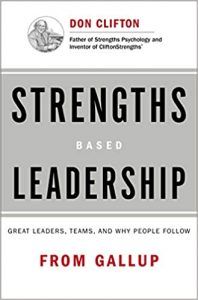
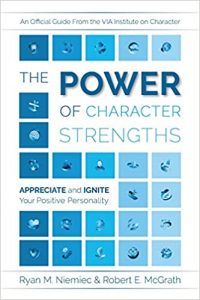
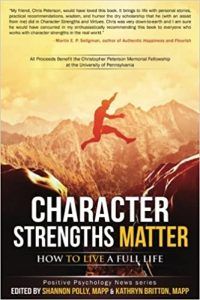
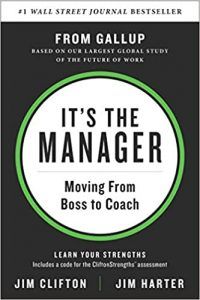
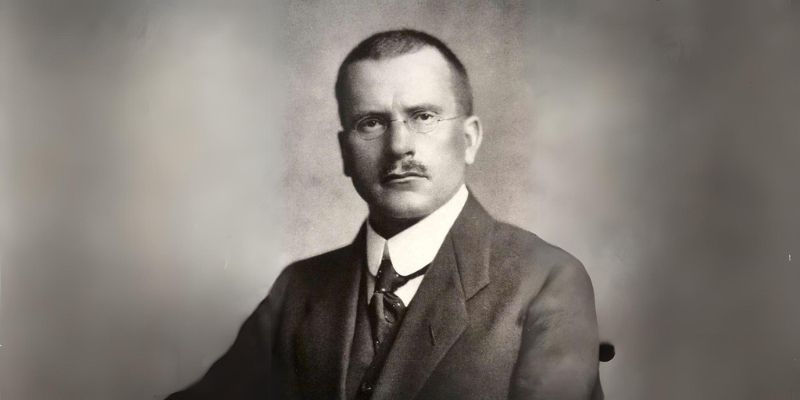



What our readers think
I was unable to get the downloads. Could you email them to me. There was a problem the first time i tried to download them and when i tried to do it a second time, it said my info had already been used. Thank you.
Hi Elizabeth!
Are you referring to our three Strengths Exercises? In that situation, you can easily request it again by re-entering your email address here.
Hope this helps!
Kind regards,
Julia | Community Manager
Good